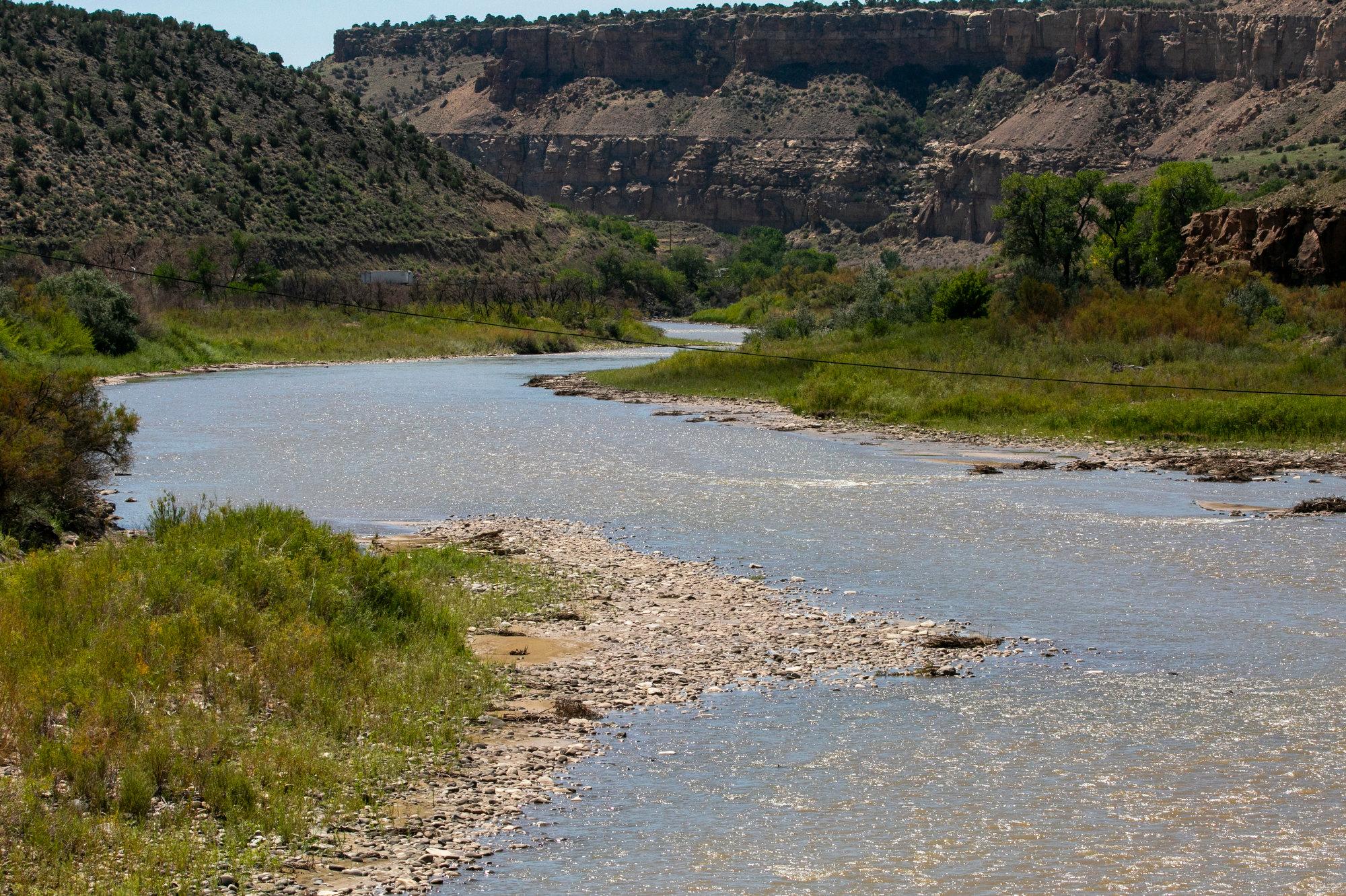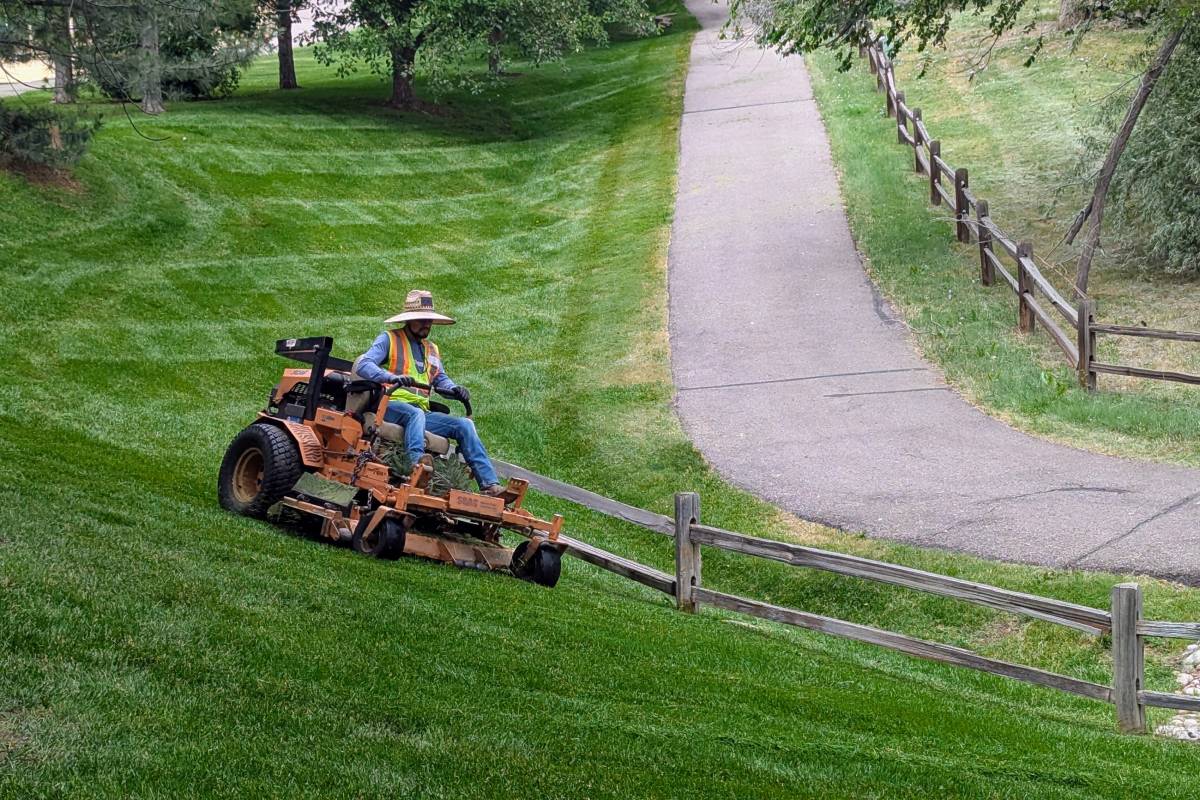
Last month, the federal government dropped a bombshell on the states that share the Colorado River.
The U.S. Bureau of Reclamation gave Colorado and the other six states in the basin just two months to come up with a plan to drastically reduce the amount of river water they use. If they don’t, the federal government has threatened to use its emergency authority to make the cuts it feels are necessary.
The mid-August deadline is quickly approaching for the states — Colorado, Utah, Wyoming, New Mexico, California, Nevada and Arizona — to figure out how to cut water usage down by 2 to 4 million acre-feet. For context, the entire state of Arizona is allowed to use 2.8 million acre-feet of river water each year.
Becky Mitchell, the commissioner of the Colorado Water Conservation Board, represents Colorado at the planning table with other states in the basin. Right now, her work is focused on collaborating with the other states in the upper part of the river basin — Utah, Wyoming and New Mexico — to come up with a list of ways their states can cut down on how much water they use.
In a conversation on CPR’s Colorado Matters, Mitchell said most of that responsibility should be on the states in the lower part of the river basin: Arizona, Nevada and California.
“They're using more than mother nature provides,” Mitchell said.
Mitchell said the states in the upper part of the river basin had been forced to use less water because of ongoing drought worsened by climate change. The states in the lower basin use water stored in Lake Powell and Lake Mead, the two largest reservoirs in the U.S., which she said has allowed those states to increase their water usage in the last few years.
Mitchell said water stored in Lake Powell and Lake Mead allows the lower basin states to use more water than the river can provide, which has significantly dropped after decades of ongoing drought and the impacts of climate change.
The federal demand to use less water is a result of the record-low water levels in Powell and Mead, which provide water and hydroelectric power to millions of people in the West. As these reservoirs drop, they’re getting close to no longer having enough water to make power.
Colorado doesn't use water in Lake Powell or Lake Mead or much of the hydropower that's produced there. Despite that, Mitchell said it's crucial that the upper-basin states be included in protecting those resources. But she points back to the lower-basin states as the ones that need to be most responsible for keeping enough water in the reservoirs.
Tanya Trujillo, the assistant secretary of the U.S. Department of Interior for water and science, recently joined a Colorado water law conference virtually to talk about the Colorado River crisis and the demand for states to conserve more water and said the agency’s order for water cuts includes Colorado and other states in the upper part of the river system, even though they don’t rely on water supplies collected in the major reservoirs downstream.
“We need to be taking action in all states, in all sectors, in all available ways,” Trujillo said. “We need to be thinking as one basin.”
When asked how Colorado can contribute to the need for cuts, Mitchell said "significant" ongoing water conservations are already happening in the state. She said some projects could be expanded to decrease water use, including expanded recycling and reuse of potable water and improved technology that reduces water used for farming and ranching. Mitchell also pointed to a state law that was recently passed to create a fund to help landowners replace their grass lawns with more water-efficient landscaping.
However, the message from the federal government to Colorado and other states in the river network is that small moves to cut water usage isn’t enough. Mitchell said finding more ways to reduce water use likely means turning to new and uncomfortable sources to make cuts.
“We really have to think about if we cut from agriculture, what are the unintended consequences from that? If we cut from some sort of industry, what are the consequences from that? And we may have to be open to dealing with what those consequences are,” Mitchell said.
Agriculture uses more than 80 percent of the water in the Colorado River Basin, data show. Mitchell said it’s important to recognize the benefits of farming and ranching, but she said agriculture does need to be examined for solutions as the biggest user of water.
Mitchell is consulting state water users as she creates a list of the ways she feels Colorado could contribute to the water cuts. Kate Greenberg, Colorado's commissioner of agriculture, who has worked on water issues in the Colorado River basin for over a decade, said the states in the river basin have always been aware that the federal government will step in if the water source isn't sustainably managed.
Greenberg said it’s important that the states in the river basin, and internally in Colorado, not “pit sector-against-sector.” She said that agriculture shouldn’t be asked to give up most of the water just because farmers and ranchers use most of the water.
“There are massive societal implications to that kind of thinking,” Greenberg said.
Because farmers and ranchers in Colorado have been forced to use less water amid climate change, Greenberg said they’re adopting new irrigation technology, soil health practices and crop switching to adapt.
“Knowing how much we have done to date has gotta be part of that conversation,” Greenberg said. “We can't just keep giving and giving and giving without a very tangible recognition of how much we've already given.”
Andy Mueller, the general manager of the Colorado River Conservation District, said he was surprised that the federal government did not differentiate which states need to contribute most to the cuts. He said that Western Slope farmers and ranchers have “born almost the entire burden” of water cuts in the state over the last 20 years of drought.
“Those cuts have not necessarily been to the cities or to industry. It's really taken water directly out of agriculture,” Mueller said.
He said Colorado farmers and ranchers are obligated to continue to conserve water but noted that water users in Denver, Colorado Springs, and other Front Range communities that use Colorado River water also share that obligation.
More about the Colorado River
- The most endangered river: A conservation group considers the Colorado River the epicenter of the nation’s water and climate crisis.
- Lake Powell dangerously low: As the reservoir dries up, there’s growing concern about the future of hydropower production.
- What happens if the river keeps drying up: It could trigger a chain-reaction of legal wrangling that could lead to some water users being cut off from the river.
- Tribes fight for inclusion: Leaders of native tribes who depend on the river say a century-old agreement is fueling water inequalities.
- Where’s the water going?: Much of it gets absorbed by soil baked dry by hotter temperatures due to climate change.









